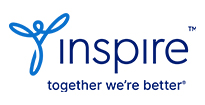
After three brushes with cancer, Robert Weker understands the patient journey more than many – and he is determined to put that experience to good use.
The avid blogger and passionate advocate retired from his R&D role four years ago to focus on his own health, and now works full time on making sure the patient voice is “in the room” when pharma companies make decisions.
Winding road
“My journey is a bit complicated, because I am a three-time cancer survivor,” said Robert, 60, who lives just outside of Philadelphia in the United States.
“First, it was testicular cancer, back in 1991, then I was diagnosed with liposarcoma in 2010, and pancreatic cancer in 2014.”
His first two cancers were discovered early, and, while he did experience treatment side effects, things were “manageable”, he said.
“My broad ambition is to get medicines and medical solutions that are more accessible, more affordable, and available in a more timely, more patient friendly way.”
“I don’t want to minimise cancer in any way, shape or form, but the testicular cancer was caught early, and the treatment success rate was well over 90%. It was more of an inconvenience. It was like entering a tunnel, but you could already see the light at the end.
“The liposarcoma was a little but different, but it was still caught pretty early and there was a high survival rate. Neither of the cancers significantly disrupted work.”
The pancreatic cancer, however, was a “completely different ball game”.
“At that time, the five-year survival rate was in the order of 7%. So, when I entered that tunnel, it was pretty dark.”
Robert decided to enrol on a clinical trial of chemotherapy plus high dose vitamin D at the University of Pennsylvania. Afterwards, he had to fight for the proton beam radiation therapy his doctor recommended as his insurance company considered it to be experimental.
“I was told my policy didn’t cover it. Even though my entire medical team was saying ‘we can’t do normal radiation because it’s too much exposure and his system as a whole won’t be able to handle it’.
“I am not a passive patient, so I kept calling and calling and finally they said there was a review panel,” said Robert, adding that he was shocked to find the panel did not include a radiation oncologist. “Even the voice of my doctor, who is probably one of the top three in his field worldwide, was being totally muted.”
After a number of reviews and appeals and countless phone calls, the treatment was finally approved but it had taken six weeks and many headaches.
Being in the room
His experiences have made him realise the importance of the patient voice being front and centre of healthcare decisions.
“I want to be in the room where it happens, where the decisions are made, so that it’s not just me, a passive patient sitting in the chemo suite,” he said.
“That means working with pharma companies to influence early decisions around R&D, and providing patient insights throughout the process.”
We also need to think about how other stakeholders – insurance companies, doctors, and hospitals, for example – fit into that, said Robert.
“My broad ambition is to get medicines and medical solutions that are more accessible, more affordable, and available in a more timely, more patient friendly way.”
Explaining why patients were an essential part of that mission, he said: “Everyone is driven by different goals and different stakeholders will have different drivers of what’s important.”
Levelling up
Robert, who works with several pharma companies on a variety of projects, believes that the industry is going in the right direction, but that there is still some way to go.
He described three levels of patient engagement, saying most organisations were currently “between one and two”.
“The first one is engaging the patient. That might call a patient or group of patients in to review a consent form or a trial protocol. They will ask them if it seems reasonable, feasible, or overly burdensome, then take those comments and say: ‘see you later’.”
The second level is more like a patient partnership, he said, using his position as member of one company’s Oncology Patient Council as an example.
“We meet once a month throughout the development cycle to provide feedback. We engage with them on challenges they might be facing, or on specific topics such as patient diversity. It’s a continuous process – a feedback loop – not a one-off interaction,” said Robert.
The next step is true patient centricity, which Robert described as “putting the patient at the centre of the wheel”.
“What that looks like in practice is ongoing involvement and engagement with the patient throughout,” he said, adding that it included making sure interventions were as easy to access geographically, logistically, and physically, as possible.
“It all goes back to this idea of being in the room. Of course, not all patients can be there, but if I can share the insights I have gained from my own journey, under the caveat that all patients are different, then at least they have heard what I have to say,” Robert concluded.
 Patient Insights is a monthly series that appears in partnership with Inspire, a company with an online support community of more than 2 million patients and caregivers worldwide.
Patient Insights is a monthly series that appears in partnership with Inspire, a company with an online support community of more than 2 million patients and caregivers worldwide.
The post Be in the room: Turning patient engagement to patient centricity appeared first on .
